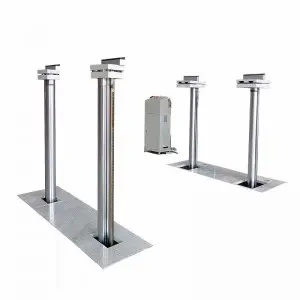
Exploring the Art and Science behind the Fascinating World of Cylinders: From Ancient Tools to Cutting-Edge Technology

Exploring the Art and Science behind the Fascinating World of Cylinders: From Ancient Tools to Cutting-Edge Technology
Cylinders have been an integral part of human civilization for centuries, serving various purposes across different fields. From simple tools used by ancient societies to critical components in modern technologies, the versatility and significance of cylinders are undeniable. This article delves into the intriguing history and the fascinating applications of cylinders throughout time.
The concept of cylinders dates back to ancient times, when they were primarily utilized as tools. The Egyptians, for instance, used cylindrical stone tools for grinding and engraving. These early versions were rudimentary but laid the foundation for the development of more sophisticated cylindrical objects later on.
During the Hellenistic period, the renowned mathematician Archimedes made significant contributions to the study of cylinders. He developed the concept of calculating the volume of a cylinder, which led to the formulation of the famous Archimedes’ Principle. This principle, which states that the buoyant force on an object submerged in a fluid is equal to the weight of the fluid displaced by the object, revolutionized the understanding of hydrostatics and buoyancy.
Cylinders also played a crucial role in ancient engineering and construction. The Romans, known for their remarkable architectural achievements, utilized cylindrical structures prominently in their designs. One of the most notable examples is the Pantheon in Rome, which features a massive cylindrical drum supporting a remarkable dome. This architectural marvel still stands today, a testament to the enduring strength and versatility of cylinders.
Fast forward to the modern era, and the importance of cylinders has only increased. In the realm of transportation, cylinders are at the heart of combustion engines, be it in cars, motorcycles, or even airplanes. These engines rely on the power generated by controlled explosions within cylindrical chambers to propel vehicles and enable air travel, revolutionizing the way we travel and connect with the world.
Another crucial application of cylinders lies within the realm of manufacturing and industry. Hydraulic cylinders, for instance, are widely used in machinery to provide linear force and motion. These devices operate by transferring compressed fluid into the cylinder, producing a linear movement that can be harnessed for a range of tasks, including the operation of heavy machinery and the movement of various industrial components.

Exploring the Art and Science behind the Fascinating World of Cylinders: From Ancient Tools to Cutting-Edge Technology
The medical field also benefits greatly from cylindrical devices. The development of syringes, which rely on cylindrical tubes to administer medication or extract bodily fluids, has revolutionized healthcare practices. Additionally, prosthetic limbs often incorporate hydraulic or pneumatic cylinders to provide mobility for individuals who have experienced limb loss, enabling them to lead more independent and fulfilling lives.
In recent years, advancements in technology have led to the emergence of 3D printing, a groundbreaking innovation that has opened up a world of possibilities for cylindrical designs. 3D printers can create intricate cylindrical structures with unparalleled precision, which has implications across numerous industries, including aerospace, medicine, and architecture.
Moreover, the concept of cylinders has found its way into the world of art, providing endless inspiration for artists. The works of renowned sculptors like Constantin Brâncuși and Alexander Calder showcase the artistic potential of cylinders, highlighting their ability to evoke emotion and convey meaning through form and shape.
In conclusion, cylinders have played a vital role in human history and continue to shape our world today. From their humble origins as simple tools to their integration into cutting-edge technologies, cylinders have proven their versatility and significance time and again. As we embrace new advancements and push the boundaries of innovation, one thing remains certain: the captivating sphere of cylinders will continue to captivate our imagination and drive progress for generations to come.k Lift Accessories
